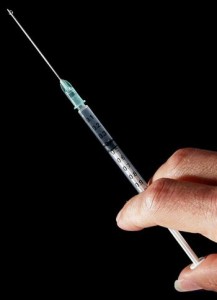
Official NHS figures show a 20% rise in patients relying on heavy-duty drugs to obliterate the whine of drills and scrape of metal on enamel.
Nearly 40 Scots a day are opting for sedation by tablets, laughing gas and even IV drips.
Most of them are middle-aged patients, traumatised by their experiences of dentistry during the “dark ages” of the 1950s to 70s.
Sedation puts patients in a dream-like state and also means they are unlikely to remember what happened in the dentist’s chair.
But the side-effects can include light-headedness, headaches, dizziness, and visual disturbance, a feeling of jet lag, nausea or severe allergic reactions.
Pop legend Michael Jackson died after an overdose of fast-acting sedative Propofol which is often used in dental procedures.
The effects of sedation can also make it more difficult for dentists to carry out difficult procedures.
Ballooned
Official statistics released by NHS Scotland’s Information Services Division (ISD), show the number of procedures involving sedation was 10,991 in 2007.
But in the first eleven months of last year the figure hit 13,766.
The cost has also ballooned by a third from £550,906 in 2007 to £769,733 last year.
Fear of the dentist is estimated to affect between a quarter and a half of all Scots.
Research last year revealed three million people in the UK have attempted DIY dentistry as they are too scared of going to the dentist.
Arshad Ali, clinical director at the Scottish Centre for Excellence in Dentistry, in Glasgow, said he carried out around three sedation treatments a week.
“We are seeing increasing numbers of patients requesting to be sedated, but we prefer to do it as a last resort,” he said.
“It is always possible that patients could suffer an allergic reaction when they are under, people wont be able to drive, work, and are even told not to sign any important documents for 24 hours after the procedure.
“For a dentist it can also be a challenge, making a patient less co-operative. In some cases we have to give them oxygn which can get in the way. A patient’s cough reflex can also be affected.”
Comfortable
Mr Ali said most patients seeking sedation were middle-aged and terrified of the dentist as a result of childhood trauma.
“Up to 50 percent of the population still has a fear of the dentist, and often it can relate back to a negative childhood experience.
“Most of the phobic patients we see are between 35 and 65 years old, we don’t tend to see a lot of teenagers.”
Others simply find it convenient. “We are seeing more patients requesting to be sedated, especially busy people who think one session under sedation, which they won’t remember anything about, will be very convenient,” he said.
“There are cases where sedation is very appropriate. A very long, major procedure, which may take three or four hours of work, we may advise the patient that sedation would make them more comfortable,” he added.
“We would prefer to take other approaches. Hypnotherapy can be effective in up to 70% of patients. We also like to use TLC, short appointments, doing very little at a time, and stopping as soon as the patient requests
Vincent Bissell, Professor of Restorative Dentist at the University of Glasgow, said: “Sedation is the management of anxiety in patients. There are very many people who are very anxious about receiving treatment at the dentist.
“It is certainly possible that an increasing number of people are receiving treatment because sedation is being made more available to them.”
Fear
Claire Mitchell, 31, from Edinburgh, has lived with a lifelong fear of the dentist.
She was sedated through an IV drip last year and said the experience was “amazing”.
“I was given a drip to have a wisdom tooth removed. I’ve always been terrified of the dentist but this was an amazing experience. I felt groggy for about an hour afterwards so I took a friend with me. I felt fine when I was home. I have had general anaesthetic for a procedure before and this was preferable. I would definitely recommend sedation if you get the option.”
Professor Angus Walls, who is joining the University of Edinburgh as Director of the Postgraduate Dental Institute and in January, said the amnesiac effect of the drugs was often a selling point for frightened patients.
He said: “With sedation you are still conscious and patients will be given drugs, the most popular of which is midazolam.
“These are given so that your anxiety is reduced and another great benefit it that they have an amnesiac effect, so patients will not be able to remember what has happened to them.”
Research by consumer watchdog Which? Last year revealed three million people in the UK have attempted DIY dentistry as they are too scared of going to the dentist.
A quarter of those attempting to care for their own teeth have tried to pull a tooth out with pliers and more than one in 10 have tied string around the tooth and a door handle to remove it.
Another 11 per cent have used household glue to stick down a crown or filling and six per cent have used chewing gum as an adhesive.